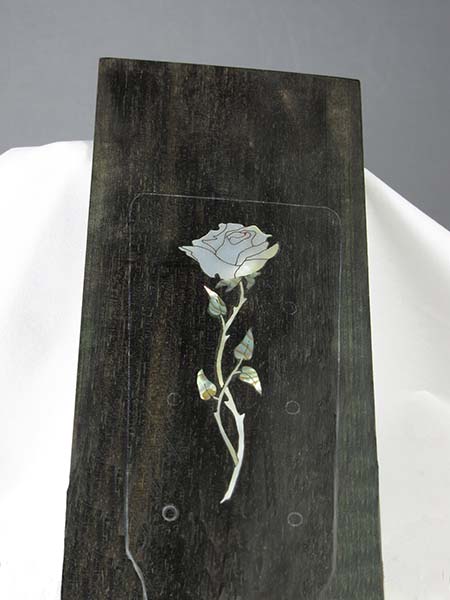Headstock and Bridge
Flowers seem to be a favourite theme for inlayers of pearl and abalone and here are some more examples.
The tulips seem small and relatively easy to cut, but woe be the inlayer that drops one of those abalone leaves – they’re small enough to break rather easily, and they downright disappear into a concrete floor. I don’t know how many times I’ve crawled around on my hands and knees (ouch) looking for a tiny lost piece of abalone ! The pearl blossom has to be cut using the same technique as the more complex flowers. That is, start at the middle, make some cuts without cutting a full 360°, then apply 5-minute epoxy that’s tinted to the same colour as the wood into which the pearl will be inlayed. Let the glue dry / harden, then make more cuts if necessary, followed with more glue. The idea is to keep the glue joints even and not skewed. Finally when all of the petals are cut and glued, the outline of the tulip can be cut.
Here’s a closeup of the tulip
The same applies concerning the rose and stem that’s been inlayed into the headstock overlay. The overlay is quite thin and will be glued to the headstock of the guitar neck, then trimmed to be perfectly aligned with the neck. Holes will be drilled for the tuners, the tuners will be fitted, and eventually a finish will be applied.


